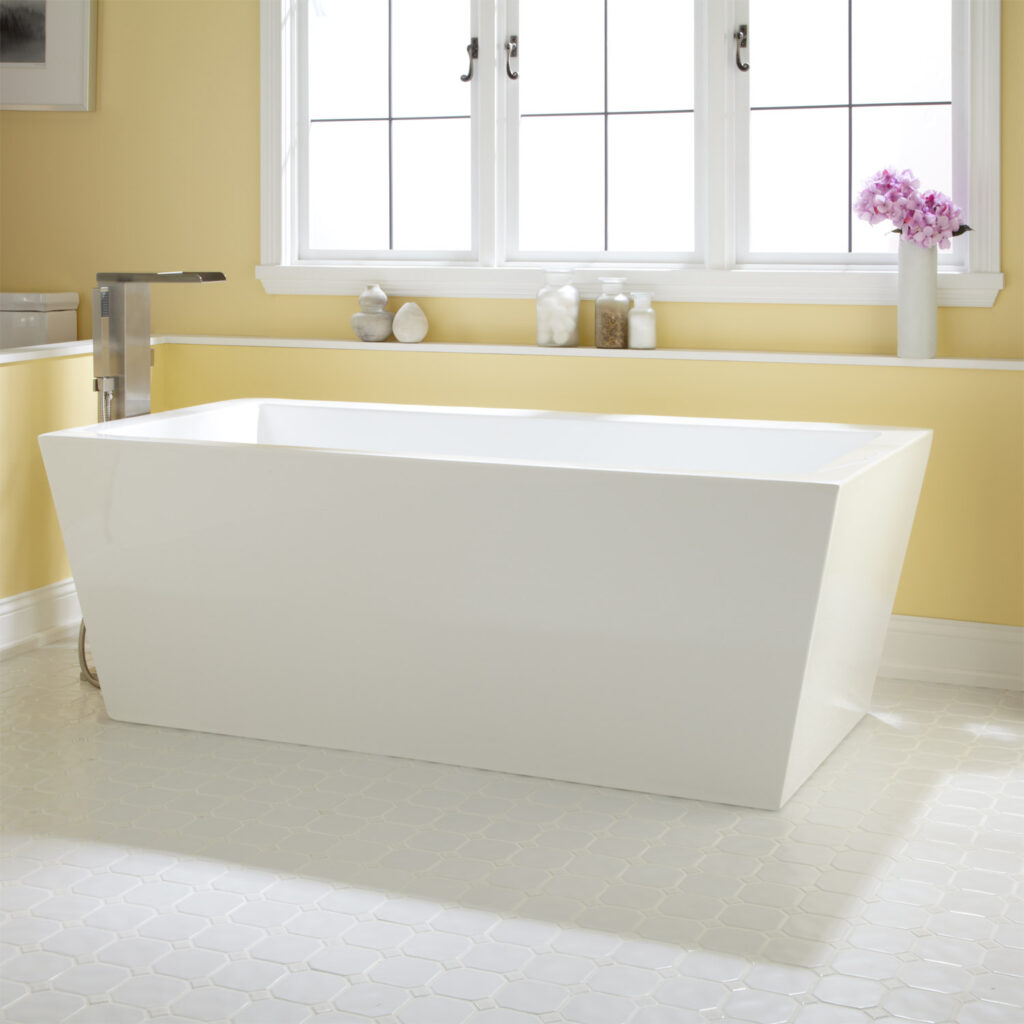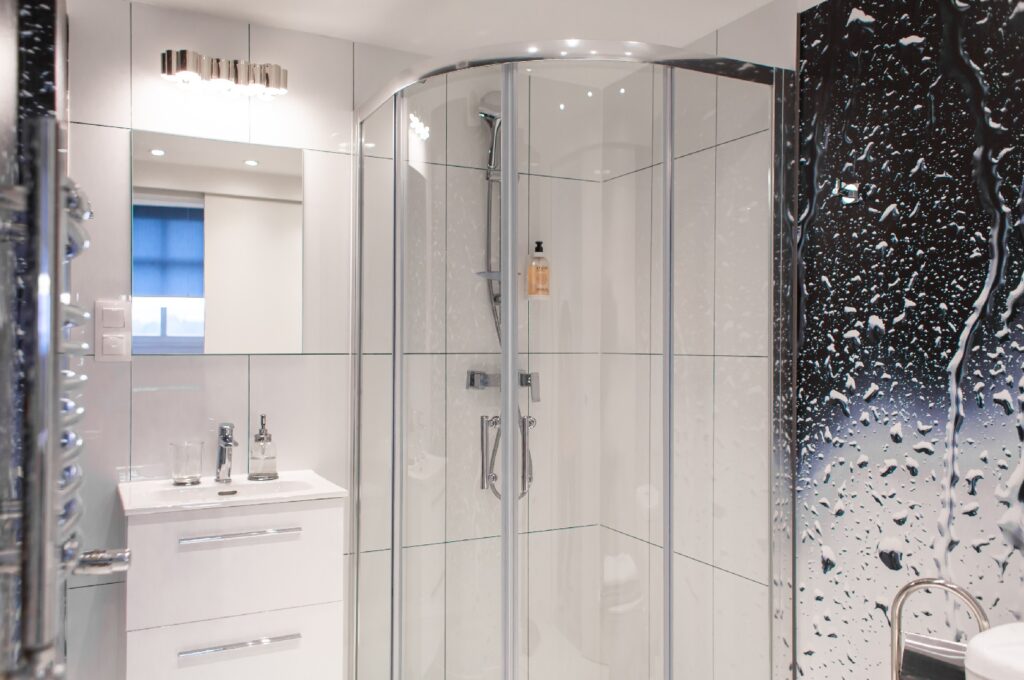5 Things No One Informs You about Shower & Bathtub Wall Panels
5 Things No One Informs You about Shower & Bathtub Wall Panels
Blog Article
{Visit Website Do you find yourself trying to find resources around Things To Look Out for Before Hiring a Plumbing Company? We recommend that you clean your acrylic bathing product made of Delta ProCrylic or Acrylic with Innovex Technology with non-abrasive soaps and cleaners, such as: When it’s time to clean, always use a terry cloth towel, soft cloth or sponge to avoid scratching the acrylic surface. Don’t use abrasive scrubbing pads, steel wool or sponges, cause permanent damage to the acrylic material. If you use a drain cleaner or clog remover, be sure to rinse thoroughly with water so no product is left standing near the drain. Some chemicals and cleaners may deteriorate acrylic surfaces, causing cracks and, potentially, property damage. To avoid this, don’t use cleaning products that state on their label that they are not suitable for use on Acrylic, ABS, Polystyrene or Plastic. Be sure to check the label of any product before you apply it to the surface; it’s easier to avoid damage than to try to remedy it. Chemicals we do not recommend using to clean acrylic showers/tubs: When you’re ready to apply sealant, a little planning goes a long way. Pick up some painter’s tape and use it to mask off the seam to help make cleaning up easier. When you’re applying the bead, use a constant, steady speed to avoid an uneven finish. Use a caulk tool or a plastic spoon to work the sealant into the joint. Wetting the tool with denatured alcohol will help create a smooth finish. Follow the directions on the back of the tube for cure time. Certain chemicals and cleaners may deteriorate acrylic surfaces, causing cracks and, potentially, property damage. After you’re finished applying it, clean up the product surface and remove any excess sealant with denatured alcohol. Don’t use solvents (turpentine, lacquer thinner, mineral spirits, paint thinner, MEK, xylene, acetone, naphtha, etc.) that can wreak havoc on an acrylic surface. With a little care and consideration, you can prevent damage to your acrylic shower or tub. Keep a supply of soft cloths handy and remove any damaging products or abrasive scrubbing items from the bathroom to ensure they aren’t around when it’s time to clean. https://www.deltafaucet.com/design-innovation/inspiredliving/how-to-clean-acrylic-shower As an enthusiastic reader about Finding the Right Plumbing Expert, I figured sharing that piece was a good thing. Do you know anybody else who is fascinated with Finding the Right Plumbing Expert? Do not hesitate to share it. Bless you for your time. Visit again soon.
Acrylic bathrooms, shower trays, as well as various other acrylic washroom ware have actually ended up being much more usual in shower rooms in current times. Thanks to contemporary chemistry we currently have choices to enamel as well as ceramic products for shower room components. These include various polers as well as plastic products. Though not as sophisticated and resilient as enamel and also porcelain bathrooms and fixtures, they are extra affordable and serve basically the very same standard purpose. These materials are simple to produce, store, as well as transport and in the occurrence of damages, they are quickly repaired. Some typical examples of damage to acrylic restroom components include staining, fractures, openings, and so on. Let's have a look at some of these troubles and also quick means of fixing them.Bathroom Staining
With extended use of acrylic baths comes discoloration or staining. While some stains can be removed quickly, making use of unique chemicals, others call for that the bathroom be resprayed. It is necessary to keep in mind that bleach or detergents do very little in eliminating such discoloration and they might also intensify it. The majority of times, these cleansing agents induce staining with time. Aromatherapy oils loosen up the dust sometimes thus restoring the bath to its former splendor. Cleaning up as well as brightening also in some cases. For even more stubborn discolorations, you will certainly require a new layer of covering. This sort of repairing will certainly require a specialist.Chemical Reactions
Occasionally, people try to repaint the whole surface of their acrylic bathroom by themselves either because they do not such as the shade to conceal imperfections. When they do not such as the end result, they use paint eliminators. You should never use paint remover on acrylic baths. Although paint cleaners do not react with the surface of steel baths, they ruin acrylic baths irreversibly. This creates even more benefit the professional. The most effective strategy right here is to call an expert for help with changing the bath.Scraped shower or bath surface area
Acrylic restroom fixtures are not abrasion-resistant like enamel selections. Being a really soft product, acrylic scrapes can also be hidden without coating or filling. For these, you ought to look for expert assistance for your bath repairs.Broken Acrylic Baths
The lifespan of acrylic and fiberglass baths depends on 15-20 years for shower pans as well as baths, typically. Cracks in an acrylic shower tray are probably among the easiest troubles to fix for a repair work specialist. The best part is you get to see the outcomes virtually instantly. This coincides for PVC, material, and various other such materials. A min split need to be attended to promptly before it spreads out more causing much more extreme damages. While these can be fixed on a spending plan tackily, an expert can aid you get it done with more skill for a cost. Quick residence repairs can be done with epoxy resins however if the result turns out inadequately, this would certainly make the repair service extra challenging for a specialist.
Polymer baths, shower trays, and various other acrylic shower room ware have become more common in shower rooms in recent times. With long term use of acrylic baths comes staining or staining. You should never ever utilize paint remover on acrylic bathrooms. Paint removers do not respond with the surface area of steel baths, they damage acrylic baths irreversibly. The life expectancy of acrylic and fiberglass baths is up to 15-20 years for shower pans and also baths, usually.How to clean Acrylic shower
USE THESE NON-ABRASIVE CLEANERS
DO NOT USE THESE CLEANERS
Sealant Application Tips

Get Started